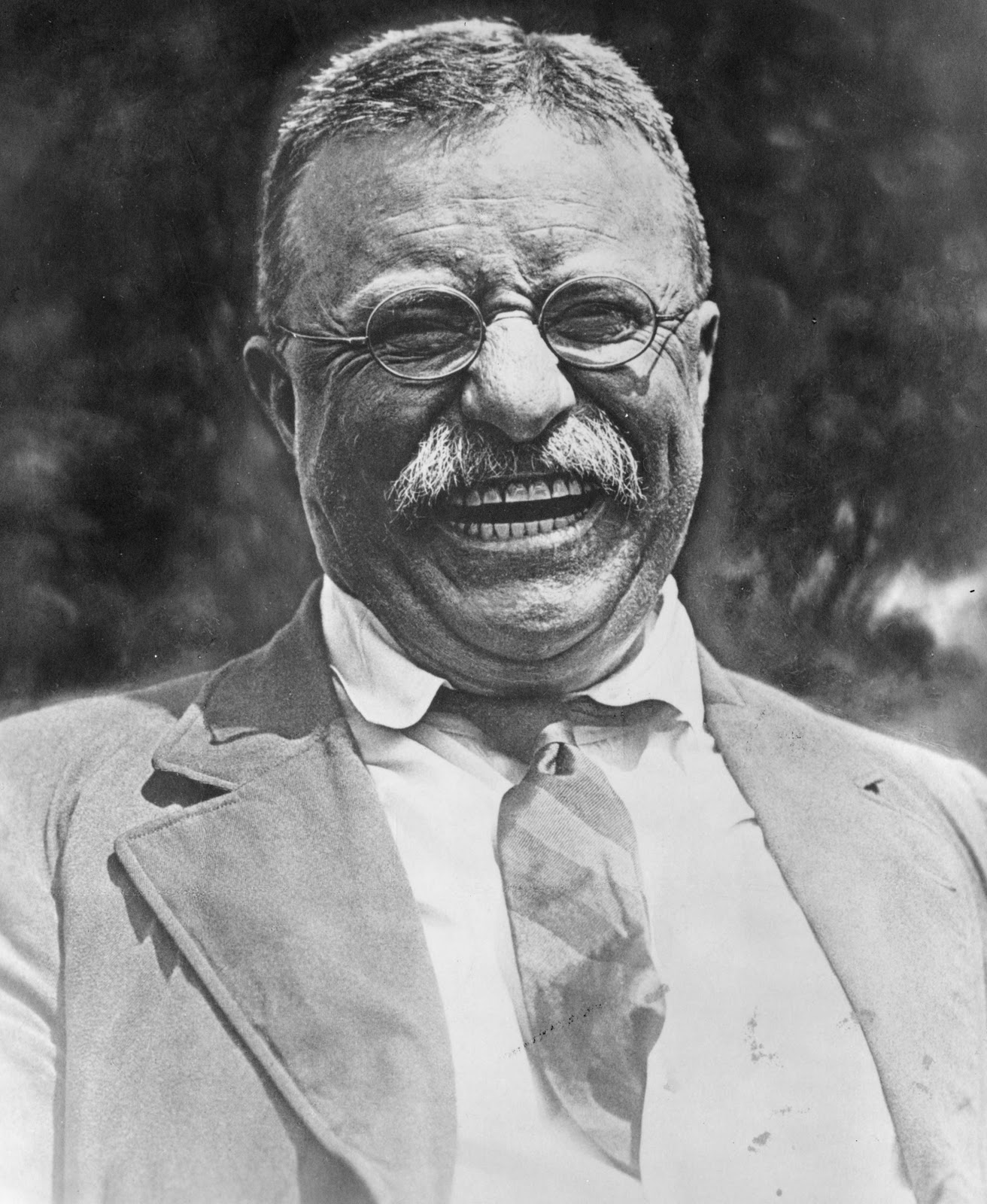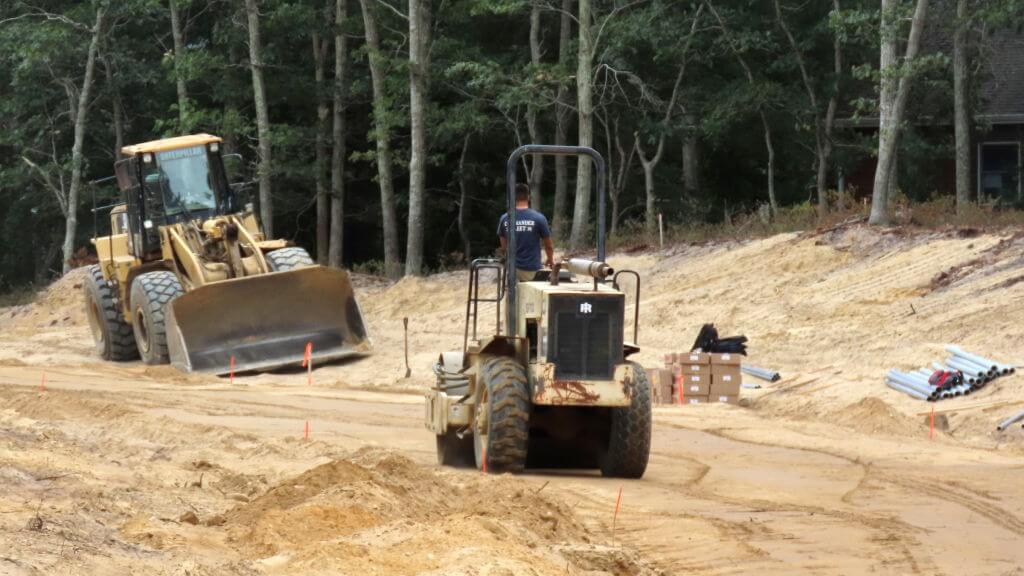Teddy Rooselvelt's Montauk Summer Vacation in 1898 with Rough Riders

Probably the most famous person ever to spend the summer in the Hamptons was Teddy Roosevelt, who lived in modest circumstances in a tent in Montauk during August of 1898. That he was here was so important to the country that while he was here, he was visited by the President of the United States, William McKinley. Two years later, McKinley was running for re-election for President with Teddy Roosevelt by his side as Vice President. Six months after that, McKinley was assassinated in Buffalo by a mentally ill man with a gun and Roosevelt, at age 42, was elevated to the Presidency. Historians consider him to be one of the greatest presidents this country has ever had.
Teddy Roosevelt was born a sickly child into an upper class family that owned a townhouse in Manhattan. The family had wealth. Teddy’s father owned a company that imported and exported glass.
Soon it was found Teddy had severe asthma, and the family doctor said he would need to be home schooled and warned that he never would be able to participate in sports or other events that required exertion or strenuous exercise. With his father’s permission, young Teddy did exactly the opposite of what the doctor told him to do. He went on camping trips, went hunting and fishing, developed an interest in animals and the natural world, actually creating a “zoo” of small animals in his parent’s home at the age of 12, and later, at Harvard, where he graduated Magna Cum Laude, he was on the boxing team.
Young Roosevelt ran successfully for public office directly after graduation to become New York Stats’s youngest Assemblyman. He was very outspoken and led a successful effort to seek the resignation of a corrupt judge. He was soon considered by many to be the most reform-minded politician in State government. When he was 26, however, both his mother and his young wife died on the same day. In his grief, he decided to leave New York, buy a ranch out in the Badlands of North Dakota and move there to spend the rest of his life raising cattle. After a year, however, a flood destroyed his herd and with his father’s urging, he returned to New York, remarried, built a big mansion in Oyster Bay and ran for Mayor as a candidate who was expected to lose to a popular incumbent. He did lose, but it was by a narrow margin, and with this popularity and reputation as a corruption buster, he was appointed the Police Commisioner of the City with the charge of cleaning up police corruption in that department, which was exactly what he did. In his spare time, he also wrote a history book about a topic that interested him—the ships of the U. S. Navy and their role during the War of 1812.
Perhaps because of this, in early 1897, he was appointed the Assistant Secretary of the Navy. He was 39 years old at this time.
On February 15, 1898, the Maine, an American Warship, blew up in Havana Harbor in Cuba killing 266 American servicemen. This ship had been sent down there to try to mediate an ongoing conflict between Cuban rebels and their Spanish dictators. It was widely believed that the Spanish had blown up the ship. The Secretary of the Navy dithered and went into consultation with the Presidential Cabinet. Roosevelt, on his own authority ordered all warships in the Navy to load up with ammunition and prepare for war with Spain, which, soon enough came. Over 50,000 men volunteered to join the army and become an expeditionary force to clear the Spanish out of Cuba. These men went off by train to Florida to assemble, at which time McKinley ordered the U. S. Navy to attack the Spanish fleet in Manila Bay in the Phillipines to prevent their intervention in this planned invasion. The attack in Manila Bay was a complete surprise to the Spanish. Their entire Navy was either sunk or run aground without the loss of a single American ship in that engagement. Spain was now unable to support its army in Cuba.
Soon thereafter, Roosevelt resigned his post as Assistant Secretary of the Navy in order to put together a regiment of men to go to war in Cuba under his command. He contacted some of his friends from Harvard and some of his friends from the ranchlands in the Dakotas and he formed the 1st Cavalry Regiment, a group of about 2,000 men, and off they all went to Florida and then across the 90 miles of water to Cuba.
The charge that Roosevelt and his “Rough Riders” soon led up San Juan Hill in Cuba became military legend and only a few weeks later, the Spanish retreated to Santiago and flew the white flag. The whole American Army including Roosevelt and the Rough Riders camped out in the hills overlooking Santiago to await the results.
During this time, the owner of the largest newspaper chain in this country, William Randoph Hearst, had his papers publish screaming headlines about the dramatic success of the American Army. Roosevelt was prominently featured. It was America’s first foray into world affairs. America would now be a world power, center stage. The people of America could hardly wait for the army to come home to tickertape parades. Also at this time, President McKinley announced that he would nominate Roosevelt for the Congresssional Medal of Honor.
All around the country, towns and cities prepared to welcome their troops home. But advisors quietly warned the President that bringing the men directly home could set off a national epidemic of malaria, yellow fever, small pox and other tropical diseases. As the President considered this, he also received from Colonel Roosevelt, as he was known by this time, a letter advising him of the sickness the men were suffering there in Cuba and asking that the troops be brought home quickly.
McKinley was put off by this letter. He took the advice but then decided NOT to offer Roosevelt the Congressional Medal of Honor. Roosevelt was simply getting too popular. What McKinley did do however, was put together a plan to save the country from the feared epidemic. He ordered that the military find here in the U. S. A. an unpopulated peninsula of land big enough to accommodate the army in quarantine, where healthy ocean breezes, along with medical and nursing care, could either return the soldiers to health or see to their dying while sparing the country the epidemic.
Beginning on August 14, 1898, dozens of troop ships began to arrive at docks in Fort Pond Bay in Montauk bearing 29,000 soldiers and about 15,000 horses. Teddy Roosevelt was among the arrivals, of course. As his ship pulled in, he shouted down from the railing of it at the few reporters who had gotten permission to go there to document the event and said the following.
“I’m in a disgracefully healthy condition! I’ve had a bully time and a bully fight! I feel as strong as a bull moose!”
About 10,000 tents soon dotted the rolling hills of Montauk, and during the next month, the men, almost all of them, survived, raced around on horseback, shot skeet and marched in formation parading through the hills and fields of our community.
President McKinley of course had to go to Montauk to talk to his great American soldiers and their leaders, including General Shafter, and of course Colonel Roosevelt, who led the charge up San Juan Hill to such fame. In early October, all the men were mustered out and sent home.
Later that autumn, Teddy Roosevelt ran for Governor of New York on a promise of cleaning up the State and ridding it of corruption and he won in a landslide. With the backing of the citizenry and with his determined attitude he was soon doing just that with great vigor —when, as it later was learned—some of the leading politicians met in a smoke filled room and decided to try to kick Roosevelt upstairs. Meeting with McKinley, who was now about to start his campaign for re-election, these politicans urged that Roosevelt be taken on as his Vice-Presidential nominee. McKinley did that, and with Roosevelt by his side, was re-elected to a second term.
Less than seven months later, however, President McKinley attended the Pan-American Exhibition in Buffalo, and there with a single gunshot was assassinated by a mentally ill man named Leon Czolgosz.
Roosevelt thus finished up more than three years of McKinley’s term, and was then elected on his own for another four more years.
During his Presidency, Roosevelt broke the monopolies of the big railroad, coal and steel barons in the country. He began seriously regulating business, instituted the Income Tax and arranged so that much of the country’s growing wealth could be shared with the common citizens. He also greatly expanded the National Parks system, preserving millions of acres of the national wilderness for wildlife and the citizenry. He sent the U. S. Navy fleet, painted white for the occasion, on a world tour to demonstrate American might. His slogan was “speak softly and carry a big stick.” He also negotiated the end of the Russo-Japanese War at a cabin in New Hampshire, for which he was awarded the Nobel Prize for Peace, and he caused the building and completion of the Panama Canal, so ships could navigate from the Atlantic to the Pacific without having to go around the southern tip of South America.
In 1909, he declined to run for what would have been a third term, and instead headed off on a month long safari in Africa to shoot big game. On his return, he retired to Oyster Bay to attend to his family, which by this time, with a new wife, now included six children.
Roosevelt’s time in Montauk has been memorialized by the purchase of the 1,126-acre cattle ranch in that town formerly known as Deep Hollow. It is now known as Theodore Roosevelt County Park.
In 1997, U. S. Congressman Rick Lazio caused Congress to vote Teddy Roosevelt his Medal of Honor posthumously. He is the only American President to ever receive the Medal of Honor. And he is the only U. S. President to receive both the Nobel Prize for Peace and the Medal of Honor.
Personally, I think a statue of this great President should be created and displayed on the Village Green in the Center of Montauk. Teddy Roosevelt—sportsman, author, soldier, governor, President—was indeed the Hamptons’ most effective, rigorous and famous summer resident.



